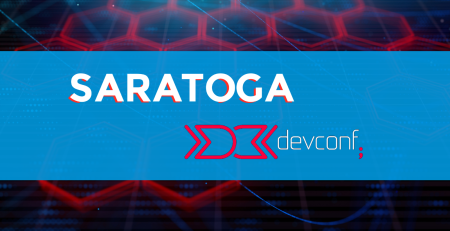In today’s data-driven world, the ability to
analyse and interpret data effectively is crucial for the success of software development projects. Data analysis helps teams make informed decisions, optimise processes, and deliver high-quality products.
Here are some strategies for effective data analysis in software development.
1. Define Clear Objectives
Before diving into data analysis, it’s essential to establish clear objectives. What questions are you trying to answer? What problems are you aiming to solve? Defining these goals will guide your analysis and ensure that your efforts are aligned with the project’s needs.
- Example 1: A software development team wants to understand user behaviour on their application. They define objectives such as identifying the most and least used features.
- Example 2: A project aims to reduce bug occurrence. Objectives might include determining the most common types of bugs and their sources.
- Example 3: For a marketing campaign, the objective might be to analyse user engagement data to improve future strategies.
2. Collect Quality Data
High-quality data is the foundation of effective analysis. Ensure that the data you collect is accurate, complete, and relevant. This may involve setting up robust data collection processes, cleaning the data to remove errors, and validating the data to confirm its accuracy.
- Example 1: Using automated scripts to collect user interaction data from a web application to ensure consistency.
- Example 2: Implementing validation checks in data entry forms to reduce human error.
- Example 3: Regularly cleaning the database to remove duplicate entries and correct inaccuracies.
3. Use the Right Tools
Selecting the appropriate tools for data analysis is crucial. Tools such as SQL, Python, R, and specialised data analysis software like Tableau or Power BI can help you analyse and visualise data effectively. Choose tools that fit your team’s skill set and the project’s requirements.
- Example 1: Using Python libraries like Pandas and Matplotlib for data manipulation and visualisation.
- Example 2: Employing SQL for querying large datasets stored in relational databases.
- Example 3: Leveraging Tableau to create interactive dashboards for real-time data analysis.
4. Leverage Data Engineering
Data engineering is critical for preparing and organising data for analysis. By creating data pipelines, you can automate the collection, processing, and storage of data. This ensures that data is readily available and in the right format for analysis, reducing manual efforts and errors.
- Example 1: Setting up an ETL (Extract, Transform, Load) pipeline to process and store data from multiple sources.
- Example 2: Using Apache Kafka to handle real-time data streams and ensure data is up-to-date.
- Example 3: Implementing data warehousing solutions like Amazon Redshift for efficient data storage and retrieval.
5. Implement Data Governance
Data governance involves establishing policies and procedures to manage data effectively. This includes ensuring data privacy, security, and compliance with regulations. Good data governance practices help maintain data integrity and protect sensitive information.
- Example 1: Establishing access controls and encryption to protect sensitive data.
- Example 2: Implementing GDPR compliance processes to handle user data responsibly.
- Example 3: Creating a data governance committee to oversee data policies and procedures.
6. Collaborate Across Teams
Data analysis is most effective when it involves collaboration between different teams, including data engineers, developers, quality assurance, project managers, and business analysts. Each team brings unique insights and expertise, contributing to a more comprehensive analysis.
- Example 1: Conducting regular cross-functional meetings to discuss data insights and project progress.
- Example 2: Using collaborative tools like JIRA or Confluence to share data findings and analyses.
- Example 3: Involving business analysts in data collection to ensure the data aligns with business needs.
7. Utilise Statistical Methods
Employing statistical methods can enhance your data analysis. Techniques such as regression analysis, hypothesis testing, and clustering can help you uncover patterns, relationships, and trends in your data. These insights can inform decision-making and improve project outcomes.
- Example 1: Using regression analysis to predict future sales based on historical data.
- Example 2: Performing hypothesis testing to determine the impact of a new feature on user engagement.
- Example 3: Applying clustering techniques to segment users based on their behaviour patterns.
8. Focus on Data Visualisation
Visualising data makes it easier to understand and interpret complex information. Use charts, graphs, and dashboards to present your findings in a clear and concise manner. Effective data visualisation helps stakeholders grasp key insights quickly and make informed decisions.
- Example 1: Creating line charts to show trends in user activity over time.
- Example 2: Using bar charts to compare the performance of different features.
- Example 3: Developing interactive dashboards that allow stakeholders to explore data in real-time.
9. Continuously Monitor and Refine
Data analysis is not a one-time task. Continuously monitor your data and refine your analysis techniques. This iterative approach allows you to adapt to changing project needs, uncover new insights, and improve the accuracy and relevance of your findings.
- Example 1: Setting up automated alerts to notify the team of significant changes in data trends.
- Example 2: Regularly reviewing and updating data models to incorporate new information.
- Example 3: Conducting periodic audits of data quality and analysis processes.
10. Invest in Training and Development
Investing in training and development ensures that your team stays up-to-date with the latest data analysis techniques and tools. Encourage continuous learning and provide opportunities for professional growth to enhance your team’s analytical capabilities.
- Example 1: Organising workshops and training sessions on new data analysis tools.
- Example 2: Providing access to online courses and resources for continuous learning.
- Example 3: Encouraging team members to attend industry conferences and seminars.
Let’s Summarise
Effective data analysis is a vital component of successful software development. By implementing these strategies, you can improve your team’s ability to analyse data, make informed decisions, and deliver high-quality software products. Remember, the key to effective data analysis lies in clear objectives, quality data, the right tools, collaboration, and continuous improvement.
Need Effective Strategies for Data Analysis in Software Development?









